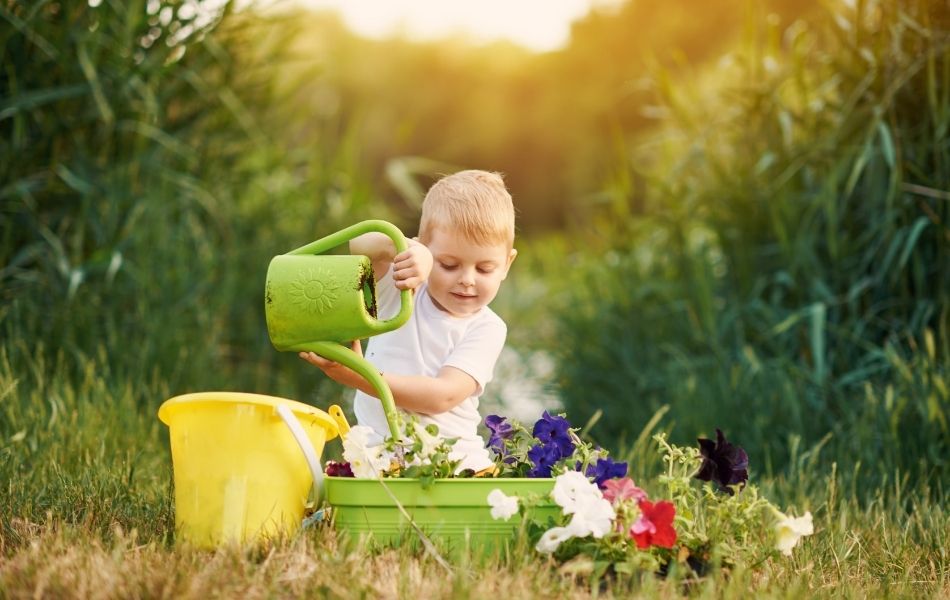Planting: gardening activity for children N°1
Planting with children is a good time for sharing and learning. Children discover nature while playing and having fun.
You can make different plantations with your children in the garden or in the vegetable patch.
Gardening is a good way to teach patience to children, who will observe and respect the rhythm of nature. But in order not to abuse their patience, favor plants with easy yields, here are some examples.
Bulb flowers: Let your children choose their favorite bulb flowers. Plant them ideally in autumn to decorate your garden in spring with magnificent tulips, hyacinths, crocuses….
The vegetable garden: Plant fruits and vegetables with your little ones. Choose tomatoes, radishes, beans, strawberries or even raspberries. These fruits and vegetables grow quite quickly and will delight your children.
Tools needed: A trowel and gloves. The trowel is ideal, it is small and not too sharp, perfect for making planting holes. Remember that these tools exist in child size and that it is preferable that an adult supervises the plantations.












